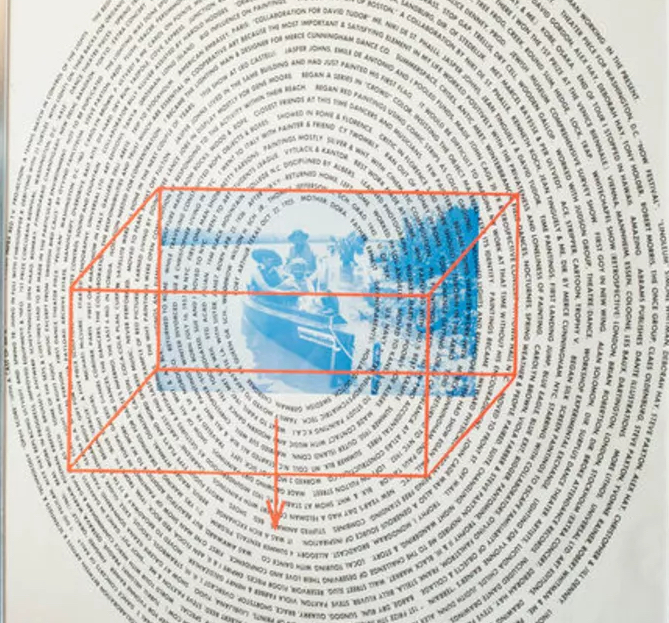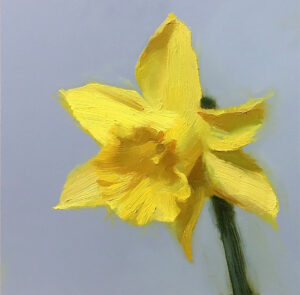Robert Rauschenberg, a pioneering figure of the Neo-Dada and Pop Art movements, created the groundbreaking artwork titled “Autobiography” in 1968. The work exemplifies the artist’s ingenious approach to assemblage, incorporating found objects, photographic prints, and handwritten text to create a visually captivating narrative that invites viewers to explore themes of memory, materiality, and the passage of time.
A Visual Memoir
“Autobiography” is a monumental work, measuring approximately nine by sixteen feet, and consists of a freestanding hinged structure with multiple panels. Incorporating materials such as wood, glass, aluminum, and cast iron, the piece showcases Rauschenberg’s ability to transform everyday objects into profound and poetic elements of his work. Throughout the panels, the artist has included personal photographs, newspaper clippings, and snapshots of urban landscapes, as well as various artifacts from his own life, such as family snapshots and found objects.
In this work, Rauschenberg employs his signature approach to image transfer, which involved transferring photographic images onto a variety of surfaces using a solvent. This technique allowed him to seamlessly integrate personal and historical references into his art, blurring the boundaries between representation and abstraction.
A Reflection on Time and Space
“Autobiography” serves as a visual memoir, recounting key events, experiences, and influences from Rauschenberg’s life. The artwork invites viewers to reflect on the nature of time, as the images and objects resonate with the artist’s past while also existing in the present moment of the viewer’s experience. This exploration of temporality highlights the interconnectedness of personal and collective histories, as well as the fluidity of memory itself.
Furthermore, “Autobiography” exemplifies Rauschenberg’s fascination with the interplay of two- and three-dimensional space. By combining flat, photographic images with tangible objects, the artist challenges traditional notions of perspective and representation. This dynamic interplay between flatness and depth reflects the complex relationship between reality and its artistic interpretation.
A Pivotal Moment in Art History
Created in 1968, “Autobiography” coincides with a pivotal moment in Rauschenberg’s career, as well as the broader art world. As the 1960s drew to a close, the Neo-Dada and Pop Art movements began to give way to new modes of artistic expression, such as Minimalism and Conceptual Art. Despite these shifts, Rauschenberg continued to experiment with assemblage techniques, pushing the boundaries of what constitutes a work of art.
Robert Rauschenberg’s “Autobiography” (1968) stands as a testament to the artist’s groundbreaking vision and his profound influence on contemporary art. Through its rich layering of images, objects, and narratives, the work invites viewers to reflect on the nature of memory, materiality, and the passage of time, while also considering the complex relationship between art and everyday life. Complete this please?
The Legacy of “Autobiography” in Contemporary Art
“Autobiography” not only encapsulates Rauschenberg’s personal journey but also serves as a broader commentary on the human experience. By incorporating fragments of his life into the artwork, Rauschenberg transforms the personal into the universal, allowing viewers to connect with their own memories and histories. This act of storytelling through assemblage and image transfer has had a lasting impact on contemporary art, influencing generations of artists who seek to explore the intersections of identity, memory, and materiality.
The work’s emphasis on repurposing everyday objects and integrating them into art also reflects Rauschenberg’s commitment to breaking down the hierarchy between “high” and “low” culture. This democratization of materials and subject matter continues to resonate in contemporary practices, where artists often draw inspiration from the mundane to create profound statements about society, culture, and the self.
Viewer Engagement and Interpretation
One of the most compelling aspects of “Autobiography” is its invitation for viewer participation. The multi-panel structure and layered imagery encourage an active engagement with the work, as viewers move aroundit, piecing together the narrative and interpreting the connections between the various elements. This interactive quality aligns with Rauschenberg’s belief in the collaborative nature of art, where the viewer plays an essential role in completing the work’s meaning.
By leaving certain aspects open to interpretation, Rauschenberg allows “Autobiography” to evolve with each viewer’s perspective, making it a living, dynamic piece that continues to inspire new insights and reflections.
A Timeless Exploration of Identity
More than five decades after its creation, “Autobiography” remains a powerful exploration of identity and the ways in which we construct and reconstruct our sense of self over time. Rauschenberg’s ability to weave together the personal and the universal, the concrete and the abstract, ensures that the work resonates with audiences across different contexts and generations.
As a cornerstone of Rauschenberg’s oeuvre, “Autobiography” exemplifies his innovative spirit and his ability to transform the ordinary into the extraordinary. It challenges us to consider the ways in which our own lives are shaped by the materials, memories, and moments that we collect along the way.
Impression
Robert Rauschenberg’s “Autobiography” (1968) is more than just a visual memoir—it is a profound meditation on the passage of time, the fluidity of memory, and the enduring power of art to capture the essence of human experience. Through its intricate layering of images, objects, and text, the work invites us to reflect on our own lives and the stories we carry withus. In doing-so, it cements Rauschenberg’s legacy as one of the most innovative and influential artists of the 20th century, whose work continues to challenge, inspire, and captivate.
No comments yet.







